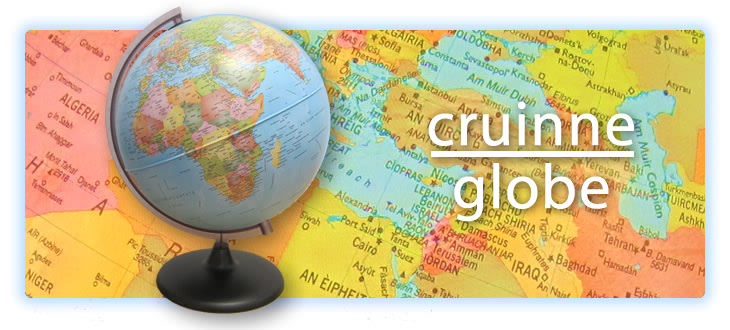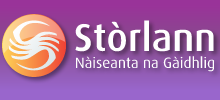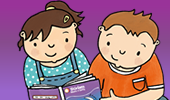
The first Gaelic globe is distributed
18 April 2012
At the very beginning of 2012 Stòrlann distributed 560 globes to nursery, primary and secondary schools throughout Scotland.
The aim was to have a globe in every Gaelic nursery and primary class, and globes in every secondary school which teaches subjects through the medium of Gaelic.
Despite today’s sophisticated technology, a globe is still an extremely useful resource to help children visualise and understand the world in which they live.
It can be used in almost every topic which will be covered in CfE, and teachers are delighted to have it.
Stòrlann officers were in Belfast to launch the collaboration which resulted in the excellent resource Mar a chuala mise e.
While there they saw the Gaeilge globe and found out about Nova Rico, the Spanish company which produced it.
Nova Rico have been making globes since 1955 and their cartographic text has been translated into more than 30 languages.
Their political and geographical data is updated regularly. The globe is made of PVC rather than paper as was used in earlier globes.
The cartography is printed OFFSET in two halves on PVC sheets. The sheets go through a vacuum forming process to make two hemispheres which are then electro-welded together along the line of the Equator.
This is a specialised process which produces a very accurate globe.
When we produced Atlas Sgoile Oxford in 2010 we were building on previous publications, Map-balla an t-Saoghail and Map Alba.
Debate is ever present with Gaelic placenames, but we agreed principles to guide us through the translation of the Atlas. (You can read these at http://www.storlann.co.uk/beurla/resources/atlas-sgoile-oxford.html.)
Consequently, the translation work had been largely completed and this reduced the amount of work required on the globe. We had a sample ready to launch at An t-Alltan in October 2011.
The final globe, at 30cm, is bigger than the one shown there.
Storlann are delighted to be supporting the tremendous work being done in Gaelic medium education, and Bòrd na Gàidhlig’s primary aim of increasing the number of persons who are able to use and understand the Gaelic language.




